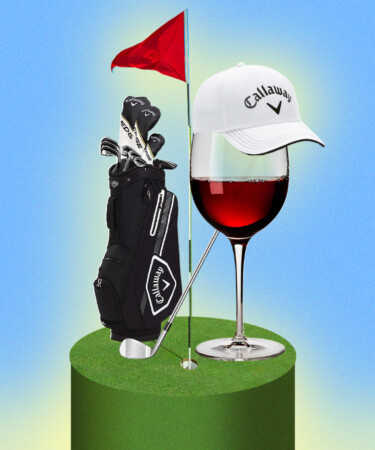When Ely Callaway Jr. passed away in July 2001, the New York Times obituary headline read “Ely Callaway, Golf Club Maker, Dies at 82.” Known for introducing the Big Bertha driver that completely reimagined how driver clubs should be designed, Callaway was an industry leader in the world of golf equipment for over 30 years. But buried deep in the tribute that recounted his work in the textile industry and his relationship with golf was a single paragraph that mentioned Callaway had founded a winery, and that in 1976, his wines were enjoyed by Queen Elizabeth during a bicentennial lunch.
This memorial piece reflects a wider misconception of Callaway’s legacy: While the man’s mark on golf is undisputed, his impact on the world of winemaking is often overlooked. His passionate belief that remarkable wines could come from Southern California, though, would remain a driving force in establishing Temecula Valley as a serious viticultural region.
Callaway’s family was in the textile business, and he used that knowledge in the army during World War II to work in procurement. After the war, he parlayed those contacts into a 27-year career in clothing manufacturing. And while most would consider moving into retirement after decades of success, East Coaster Callaway decided to turn his focus to grapes. In the late ‘60s, there were a handful of people who had begun planting and building commercial wineries in Temecula Valley, and Callaway became one of them. After intensive research to find the right location, he planted his vineyards in 1969 and founded Callaway Winery, a label that would inspire other makers in the region.
“They ran a first-class operation and produced outstanding wines from the outset,” says Phil Baily, owner and winemaker at fellow Temecula Valley label Baily Vineyard & Winery. “Their award-winning ’74 Riesling was the spark that ignited our interest in Temecula.”
1974 really was a pivotal year for Callaway Winery, as it was when it produced the iconic Riesling that Queen Elizabeth would later drink, putting a spotlight on Temecula. It was also the year that the winery opened the area’s first public tasting room, providing access to travelers curious about the region’s wines. But one of Callaway’s most influential impacts on the industry would come from a crucial hiring decision.
“The late John Moramarco, who planted Callaway’s vineyards and later became their general manager, was a mentor to many of the wineries that followed, including ours,” says Baily of Moramarco, an eventual fixture of the Temecula community Callaway brought into the fold.
“Callaway was the leader and most influential winery in our valley for many years,” agrees Mike Rennie, co-founder of Leoness Cellars. “But John Moramarco set the standard of farming practices that elevated the quality of the entire valley.” In fact, Moramarco led efforts with Riverside County to create zoning ordinances that encouraged growth of vineyards and wineries over residential development. Callaway’s intuition — both regarding the people he hired or the land he purchased — helped solidify Temecula Valley’s future.
In 1981, Callaway sold the winery to whisky distillers Hiram Walker & Sons, intending to retire before he was drawn into the golf business he would revolutionize. He purchased the Hickory Stick company and redesigned its drivers using stainless steel, moving away from traditional wood composition and changing the future of golf clubs. Today, his brand, Callaway Golf, and Callaway Winery do not have any kind of relationship and operate completely independent of each other. But the winery continues to produce a wide selection, including Cabernet Sauvignon, Petite Sirah, Pinot Gris, Chardonnay, and Sauvignon Blanc, continuing the vision Ely Callaway Jr. left behind.
